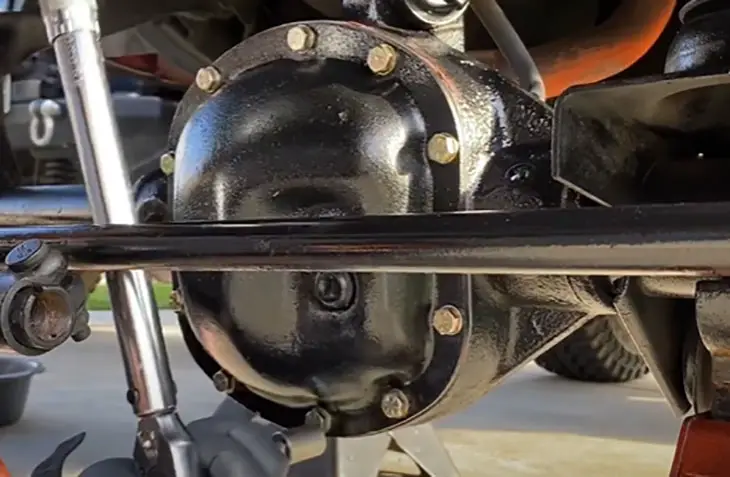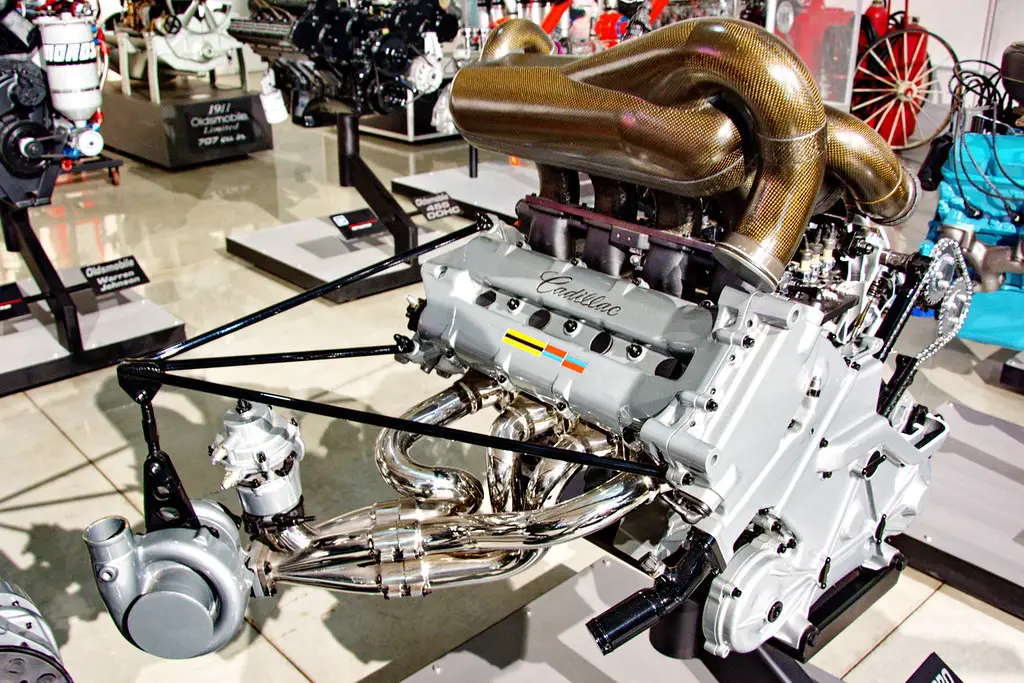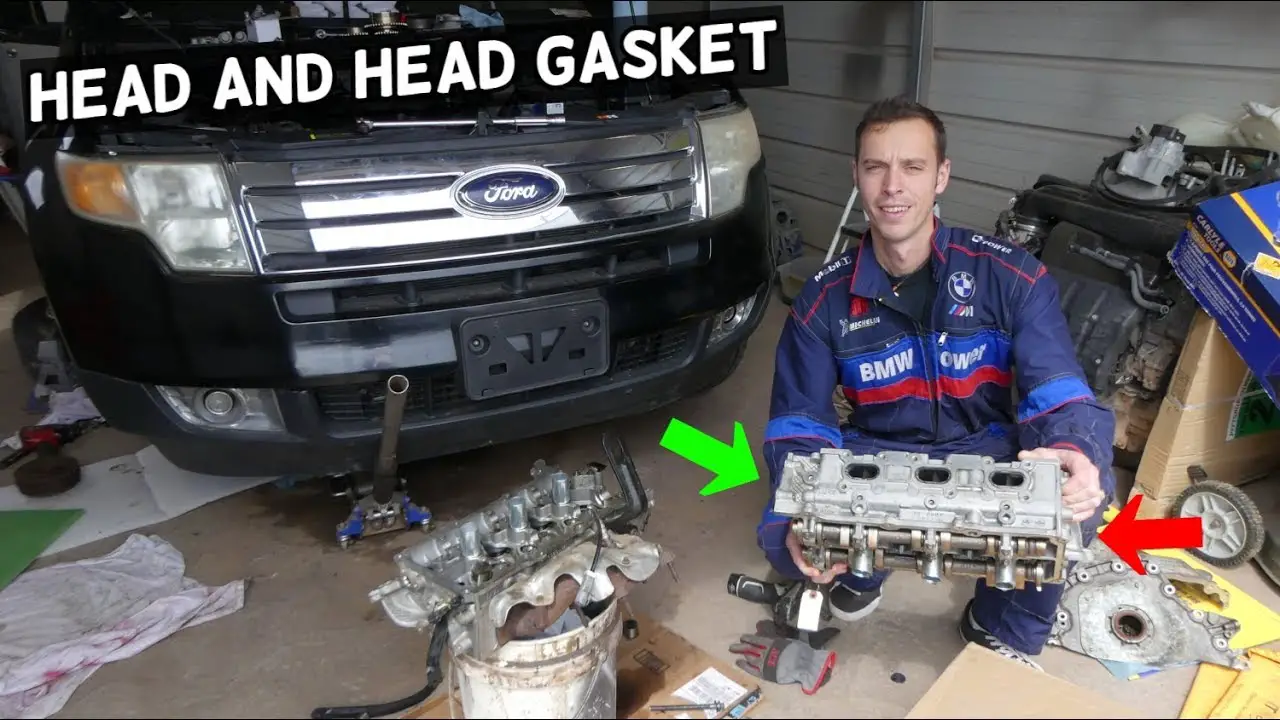Choosing the right axle for your car can make a world of difference.
In this article, we’ll delve into the nitty-gritty of Dana 35 and Dana 44 axles.
We’ll compare their strengths, weaknesses, and suitability for different driving conditions.
Whether you’re a seasoned mechanic or a car enthusiast wanting to understand more about your vehicle, this article is for you.
So buckle up and join us on this enlightening journey.
You’ll gain valuable knowledge and be better equipped to make informed decisions about your car’s axle.
Let’s get started!
How can you distinguish Dana 44 and Dana 35?
To distinguish between Dana 44 and Dana 35, follow these steps.
Firstly, examine the shape of the differential cover – Dana 44 is oval, while Dana 35 is predominantly round.
Secondly, count the bolts on the cover – Dana 44 has 10 or 12, whereas Dana 35 has 10.
Next, compare the thickness of the axle shafts – Dana 44 is thicker.
Additionally, assess the ring gear size – Dana 44 has a larger ring gear.
Lastly, consider the weight-bearing capacity – Dana 44 can handle more weight and stress.
These criteria serve as the basis for identifying Dana 35 and Dana 44 axles, aiding in easy differentiation.
What Is The Difference Between Dana 44 and Dana 35?

In brief, Dana 44 axles are renowned for their robustness and reliability, rendering them ideal for heavy-duty applications.
Conversely, Dana 35 is more suitable for lighter vehicles and standard driving scenarios, where lower stress is anticipated.
Notably, both Dana 35 and Dana 44 axles may employ C-clip axles, employing C-shaped clips to secure the axle shafts, ensuring straightforward installation.
It is imperative to conduct regular inspections and maintenance to uphold the proper functioning of C-clip axles in your vehicle, ensuring safety is prioritized.
Below, delve into the comprehensive details of the Dana 35 vs. 44 comparisons for a more in-depth understanding of their distinctions and applications.
1: Strength and Durability
When comparing Dana 35 and Dana 44 axles, the most notable distinction lies in their strength and durability.
- Thicker Components
Dana 44 sets itself apart with thicker axle tubes, a beefier differential housing, and other critical components. The increased thickness significantly enhances its ability to withstand higher levels of stress and pressure, making it notably more durable, especially under heavy loads.
- Larger Axle Shafts
Dana 44 features larger diameter axle shafts compared to Dana 35. This increased size contributes to the shaft’s strength, effectively reducing the risk of bending or snapping, particularly when subjected to higher torque or weight.
- Additional Bolts
In terms of structural integrity, Dana 44 surpasses Dana 35 by having more bolts securing the differential cover. The additional bolts provide extra strength, effectively reducing the likelihood of leaks or damage, particularly in demanding conditions.
2: Common Applications
The choice between Dana 44 and Dana 35 is often guided by their common applications, reflecting their suitability for specific vehicle types.
- Dana 44: Robust Performance in Larger Vehicles
Dana 44 finds widespread use in larger vehicles, trucks, SUVs, and heavy equipment owing to its exceptional durability. Its robust build makes it an ideal choice for applications demanding resilience, such as off-road adventures and towing scenarios.
- Dana 35: Ideal for Smaller Vehicles
On the flip side, Dana 35 is commonly found in smaller vehicles, particularly compact SUVs, designed for regular on-road driving. Its application in these contexts aligns with the need for a reliable yet lighter-duty axle in vehicles where heavy stress and off-road demands are not prevalent.
3: Off-Road Performance
When evaluating off-road performance, the distinctions between Dana 44 and Dana 35 become evident.
- Dana 44: Robust Differential for Off-Road Prowess
Dana 44 stands out with a stronger and more substantial differential assembly compared to the Dana 35. The differential is a crucial component responsible for power distribution to the wheels. This enhanced strength enables Dana 44 to adeptly handle the rigorous demands of off-road driving and towing.
For enthusiasts of off-road adventures and challenging terrains, Dana 44 emerges as the superior choice. Its durability and robustness equip it to tackle the stresses of off-road trails, ensuring a reliable and resilient performance.
- Dana 35: Limitations in Extreme Off-Road Use
Conversely, Dana 35 may not fare as well under the intense conditions of extreme off-road use. Its design and build may pose limitations, making it less suitable for enthusiasts who frequently engage in demanding off-road driving scenarios.
4: Weight and Torque Handling
In assessing weight and torque handling capabilities, the differences between Dana 44 and Dana 35 become significant.
- Dana 44: Enhanced Torque-Carrying Capacity
Dana 44 boasts a larger ring gear, a feature that significantly contributes to its augmented torque-carrying capacity. The larger ring gear facilitates superior power transfer and adept handling of heavy loads.
As a result, Dana 44 outperforms Dana 35 in both weight and torque handling. If your vehicle requirements involve carrying substantial loads or towing trailers, Dana 44 emerges as the more suitable option, ensuring optimal performance under such demanding conditions.
- Dana 35: Limitations in Handling Heavier Loads
Conversely, Dana 35 may face challenges when handling heavier loads, making it less ideal for towing scenarios. Its design may pose limitations under significant weight and torque, highlighting the importance of considering the specific demands of your vehicle’s usage.
5: Upgrading Options
When considering upgrades, Dana 44 stands out as the more versatile option.
- Dana 44: Versatility in Modifications
The robust build of Dana 44 opens up a plethora of possibilities for modifications and enhancements. For off-road enthusiasts seeking a rugged drivetrain, Dana 44 allows the addition of Chromoly axle shafts, lockers, or stronger gears. Its sturdy construction facilitates various upgrades to cater to specific needs.
- Dana 35: Limited Upgrade Options
On the other hand, Dana 35 presents limitations in terms of upgrade options due to its weaker construction. The constraints may restrict the ability to add certain special features available with Dana 44. It’s important to note these limitations when considering potential modifications for your vehicle.
6: Usage Considerations
When determining the most suitable axle for your needs, consider the following usage considerations.
- Dana 44: Robust Performance for Demanding Tasks
In scenarios involving challenging terrains, rough and bumpy roads, towing trailers, or carrying heavy loads, the Dana 44 emerges as the superior choice. Its inherent strength and durability equip it to handle these demanding tasks with ease.
- Dana 35: Adequate for Everyday Use and Small Cars
For everyday use or smaller vehicles, the Dana 35 proves sufficient. It is well-equipped to handle regular driving without encountering problems, making it a suitable choice for scenarios where heavy-duty demands are not prevalent.
Important Note:
It’s essential to note a common concern with axles, whether Dana 35 or Dana 44, is the risk of broken wheel studs during driving. This occurrence may result in wheel detachment, posing a substantial safety hazard.
Regular inspections and maintenance of these axles are imperative to prevent such issues and uphold a smooth and safe driving experience.
Additionally, drivers should be attentive to vibrations felt through the car’s floor, as they could signify potential problems with the axle housing. Monitoring these indicators enhances overall safety and vehicle reliability.
What are the key considerations when choosing the best automotive axle?
-
Know Your Vehicle’s Specifications
Understand your vehicle’s axle requirements, including size and weight capacity, by referring to the owner’s manual or the online version of the vehicle’s specifications. How does knowing the make, model, and year of your vehicle contribute to selecting a suitable axle for a safe and efficient ride?
-
Research Different Axle Types
To make an informed decision aligned with your vehicle’s needs, learn about various axle options. Axles come in multiple configurations and sizes, each designed for specific purposes and vehicle types. How does this knowledge help in choosing the right axle? For example, how might researching “Jeep Dana 35” be beneficial for a Jeep owner?
-
Consider Your Driving Needs & Consult With A Trusted Mechanic
Consider your vehicle usage, whether it’s off-road, regular commuting, or towing, and choose an axle that matches those requirements. Seeking advice from a reliable mechanic is crucial. How does understanding your driving habits contribute to selecting an appropriate axle? Why is consulting with a trusted mechanic important in this decision-making process?
-
Check Manufacturer Recommendations & Read Reviews
Look for axle suggestions in the vehicle’s manual or ask the manufacturer. How can following manufacturer recommendations optimize your vehicle’s performance and prevent potential issues? Additionally, why is it important to consider customer reviews and recommendations from fellow car owners when evaluating different axles?
-
Evaluate Budget & Assess Warranty
Consider your budget and compare axle prices to get the best value for your money without compromising quality. How does assessing the warranty offered by axle manufacturers contribute to your overall satisfaction and peace of mind? Why is it essential to check for customer support availability in case of any issues or concerns with the axle?
Which is better: Dana 35 or Dana 44?
The choice between Dana 35 and Dana 44 depends on your specific needs and the type of driving you do. Here’s a comparison to help you decide:
- Dana 35: This axle is better suited for lighter vehicles and regular driving situations, where lower stress is expected. It’s used as an all-purpose axle. However, it has earned a poor reputation in the off-road world due to its smaller ring gear size (7.62 inches) and thinner axle shafts (27 splines and a 1.18-inch diameter).
- Dana 44: This axle is more robust and reliable, making it suitable for heavy-duty applications. It’s great for off-road adventures and towing. It has a larger ring gear size (8.5 inches), thicker axle shafts (30 splines and a 1.31-inch diameter), and is generally considered stronger.
What vehicles use Dana 35?

The Dana 35 axle is used in a variety of vehicles. Here are some of the most common applications:
- Jeep Vehicles: The Dana 35 is extensively used in Jeeps, particularly as a rear axle. Some of the models include:
- Jeep Wagoneer (1984-1997)
- Jeep Cherokee (1984-2001)
- Jeep Grand Cherokee (1993-2004)
- Jeep Comanche (1986-1992)
- Jeep YJ Wrangler (1987-1995)
- Jeep TJ Wrangler (1997-2006)
- Some early Jeep JK 2 door Wranglers (2007)
- Jeep Liberty (2001-2007)
- Ford Vehicles: The Dana 35 is also used as a front axle in the Ford Explorer and Ford Ranger.
It’s important to note that the specific use of the Dana 35 can vary based on the model and year of the vehicle. Always check with a professional or your vehicle’s manufacturer to confirm the type of axle used.
What vehicles use Dana 44?

The Dana 44 axle is used in a wide range of vehicles. Here are some of the most common ones:
- Jeep Vehicles: The Dana 44 is commonly found under the front and rear of a wide variety of Jeeps. Some of the models include:
- Jeep TJ Rubicon
- Ford Vehicles: The Dana 44 is used in various Ford trucks.
- Chevrolet Vehicles: The Chevrolet Corvette has used the independent rear suspension variant of the Dana 44.
- Dodge Vehicles: The Dana 44 is found in Dodge trucks and the Dodge Viper has used the independent rear suspension variant of the Dana 44.
- International Harvester Vehicles: The Dana 44 is used in International Harvester trucks.
- Studebaker Vehicles: The Dana 44 is used in Studebaker trucks.
- Isuzu Vehicles: The Dana 44 is used under the rear of Isuzu Rodeos.
- Honda Vehicles: The Dana 44 is used under the rear of Honda Passports up until the mid-’90s.
It’s important to note that the specific use of the Dana 44 can vary based on the model and year of the vehicle. Always check with a professional or your vehicle’s manufacturer to confirm the type of axle used.
What is the benefit of the Dana 44?
The Dana 44 axle offers several benefits that make it a popular choice for many vehicle owners:
- Strength and Durability
The Dana 44 is known for its robustness and reliability. It has a larger ring gear size (8.5 inches) and thicker axle shafts (30 splines and a 1.31-inch diameter), making it stronger and more durable than many other axles.
- Versatility
The Dana 44 is used in a wide range of vehicles, from Jeeps to trucks, and even sports cars like the Chevrolet Corvette and Dodge Viper. This versatility makes it a suitable choice for various driving conditions and vehicle types.
- Off-Road Performance
The Dana 44 is great for off-road adventures. Its strength and durability make it capable of withstanding the rigors of off-road driving, providing drivers with confidence and peace of mind.
- Towing Capability
The Dana 44’s strength and durability also make it suitable for towing. If you frequently tow heavy loads, the Dana 44 can handle the extra stress and strain.
- Aftermarket Support
There is a wide range of aftermarket parts available for the Dana 44, making it easier for vehicle owners to customize and upgrade their axles.
FAQs – Dana 35 vs Dana 44
How many axles does a Jeep Wrangler have?
A Jeep Wrangler typically has two axles – one at the front and one at the rear. These are often referred to as the front axle and the rear axle. The specific type of axle used can vary depending on the model and year of the Jeep Wrangler. For example, some models use Dana 30, Dana 35, or Dana 44 axles.
What axles are in my Jeep JK Sahara?
The Jeep JK Sahara typically comes with a Dana 30 front axle. The rear axle can be either an upgraded design Dana 35 or Dana 44. However, some very early production two-door model JKs have a Dana 35 rear axle, but Jeep quickly switched production to Dana 44 rear axles. It’s always a good idea to check your vehicle’s specific configuration to be sure, as the type of axle can vary based on the model and year of the vehicle.
What makes a Dana 35 weak?
The Dana 35 is considered weak due to its smaller ring gear size (7.62 inches) and thinner axle shafts (27 splines and a 1.18-inch diameter). This makes it less robust and less able to handle high-stress situations compared to other axles like the Dana 44.
What is the best rear axle?
The “best” rear axle depends on your specific needs and the type of driving you do. For regular driving and lighter vehicles, a Dana 35 could be sufficient. For off-road driving, towing, or heavy-duty applications, a Dana 44 would be a better choice due to its strength and durability.
What vehicles have a Dana 35 rear axle?
The Dana 35 rear axle is commonly found in many Jeep models, including the Wagoneer, Cherokee, Grand Cherokee, Comanche, YJ Wrangler, TJ Wrangler, some early JK 2 door Wranglers, and the Liberty. It’s also used in the Ford Explorer and Ford Ranger.
How much can a Dana 35 handle?
The Dana 35 can handle regular driving situations and is suitable for lighter vehicles. However, it may not perform as well under high-stress situations such as heavy off-road driving or towing.
How strong is a Dana 35?
The Dana 35 is strong enough for regular driving situations and lighter vehicles. However, its strength is considered inferior to that of the Dana 44 due to its smaller ring gear size and thinner axle shafts.
Is the Dana 44 a good axle?
Yes, the Dana 44 is considered a good axle. It’s known for its strength, durability, and versatility. It’s suitable for off-road driving, towing, and heavy-duty applications.
How much weight can a Dana 44 handle?
The Dana 44 is designed to handle the weight of heavier vehicles and the stress of off-road driving and towing. However, the specific weight it can handle can vary depending on the vehicle and driving conditions.
How do I know if I have a Dana 44 rear axle?
You can identify a Dana 44 rear axle by examining the shape of the differential cover. The Dana 44 cover has a somewhat hexagonal shape, which distinguishes it from other axles like the Dana 35, which has a perfectly round cover.
Conclusion – Dana 35 vs Dana 44
We’ve thoroughly explored the Dana 44 and Dana 35 axles.
Each has its unique characteristics and uses.
The Dana 44, with its superior strength and durability, is the go-to choice for heavy-duty applications and off-road adventures.
On the other hand, the Dana 35, being lighter, is perfectly suited for smaller vehicles and regular driving scenarios.
Identifying them is a breeze once you know what to look for.
When choosing between the two, consider your vehicle’s intended use and load requirements.
With this information at hand, making an informed decision becomes a simple task.
Happy driving!




